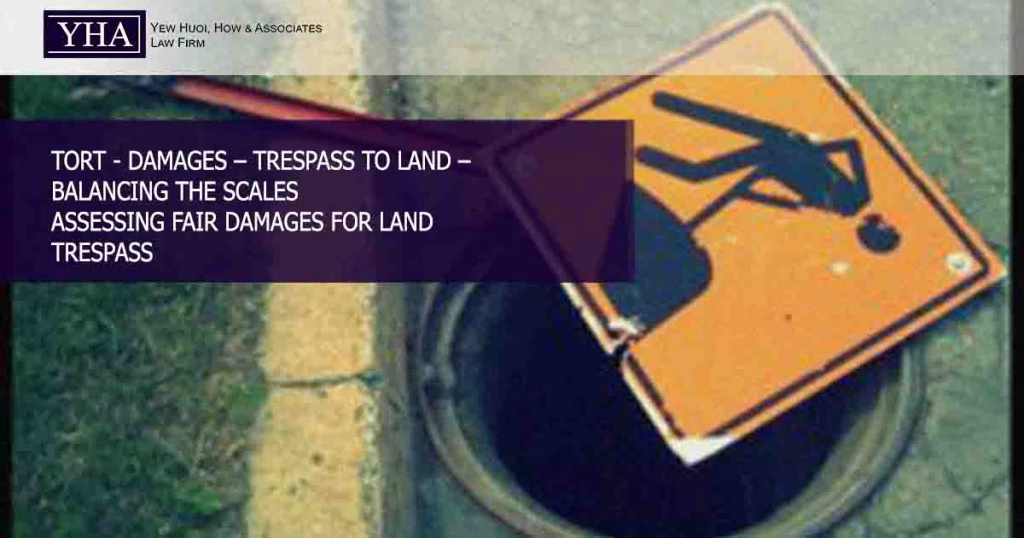Illustrative Scenario
X and Y own adjacent properties with a common border. X constructed buildings on his land, which encroached onto 0.28 hectares of Y’s land. The High Court ruled in favor of Y, finding X guilty of trespass and directing the Senior Assistant Registrar (SAR) to assess the damages payable. During the assessment proceedings, both parties presented valuation reports. Y’s report claimed the market rental value of his entire land was RM8,200 per month, multiplied by 96 months. In contrast, X’s report assessed the market value of the trespassed portion at RM2,000 per month. X further argued that even if Y’s valuation was accepted, the damages should only amount to RM57,623.04, as it should be based on the 0.28 hectares of trespassed land, not the entire property.
Key Issues
- Should the measure of damages be based on the loss of rent from the trespassed portion of the land?
- Has Y proven the amount claimed as loss?
- In the absence of sufficient proof, should only nominal damages be awarded?
- Can Y be compensated for the loss of rental for the entire land when the actual area trespassed is comparatively small?
Application to the Scenario
While X is obligated to pay a reasonable sum for the wrongful use of Y’s property, the burden of proof lies with Y to provide evidence of what that reasonable sum should be. If Y claims that he intended to rent out the land but was prevented from doing so due to the trespass, he must present evidence to establish that loss.
Although the fact of loss is presumed in the tort of trespass, the amount of recoverable loss must be proven by Y.
- According to Y’s own valuation, the entire piece of land was valued at RM900,000.00.
- The court is likely to determine that the rental amount of RM57,623, as suggested by X, is more reasonable compared to Y’s claim of RM782,200, especially given the overall land value of RM900,000.00.
Reference Cases
- Cottrill v Steyning and Littlehampton Building Society [1966] 2 All ER 295, QBD
- Amm a/l Joy (suing as Chairman Committee Members of Wat Boonyaram) v Chuan Seng Sdn Bhd [2018] 5 MLJ 255
- Akitek Tenggara Sdn Bhd v Mid Valley City Sdn Bhd [2007] 5 MLJ 697; [2007] 6 CLJ 93

